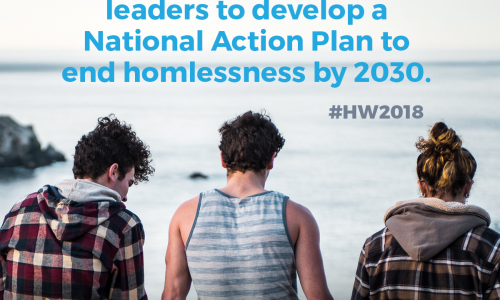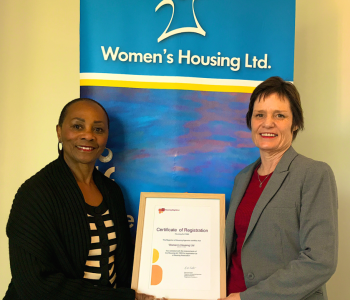As reported in The Fifth Estate
NRAS, the National Rental Affordability Scheme, was meant to assist the housing affordability crisis. Trouble was it had a beginning and an end, with the end coming way too soon for too many.
The first tranche of properties subsidised under the National Rental Affordability Scheme will lose the subsidy paid to investor owners this December. For the community housing sector that means hundreds of affordable properties may soon become not-so-affordable for low and medium-income tenants.
Horizon Housing chief executive Jason Cubit said it is that expected low-income tenants will be pushed out of properties when NRAS properties revert to market rents or are put up for sale.
“The industry has known about the end of NRAS for a number of years now. We’ve been hoping that a replacement scheme would be announced – but it hasn’t,” he said.
“What we are expecting to see once NRAS wraps up, is an increase in rent prices across properties leaving the NRAS scheme of around 20 per cent. This means if you’re currently paying $336 a week, when that incentive expires that could potentially go up to at least $420 a week – a considerable jump when you consider many of these tenants are already struggling to get by.”
The scheme was designed to provide the subsidies for just 10 years, in exchange for rents being set at 20 per cent below market rate, and the end date for the first batch will come not far ahead of reports released this week showing that a growing number of lower and middle income households are struggling with stagnant wages growth, increasing rates of insecure or part-time employment, housing stress and high energy bills.
This week’s HILDA, or Household Income and Labour Dynamics report, from the Melbourne Institute shows that affordable housing advocates are disappointed with the federal government’s newly-released National Housing and Homelessness Agreement.
Among the deficiencies, they say, are that there is no replacement for or extension of the NRAS scheme, despite hopes to the contrary.
Chief executive of the Community Housing Industry Association, Peta Winzar, told The Fifth Estate that at this stage, no-one is sure how many of private investors with NRAS properties will choose to stop providing them as affordable rentals and instead choose to put them on the market and realise capital gains they might have.
Some may choose to hold them as rental properties, she says, but one of the challenges for the sector is lack of information on what incentives there may be to do so.
Legislation before the Senate proposes a 10 per cent capital gains tax discount for an investor who chooses to offer their property at below market rent through a community housing provider.
However, Ms Winzar says the legislation leaves it up to the states and territories to define their own eligibility requirements and the discount on full market rent that will qualify a property as an affordable rental.
Currently, there are 36,721 allocated NRAS subsidies in play, she says. Around 1,850 of these are properties yet to be delivered.
Of the allocated subsidies, 190 properties will exit the pool this December. The following year it will be around 1220. The numbers grow larger in each subsequent year until the expiry of the final tranche of subsidies in 2026.
While the figure for the first 12 months is not a “noticeable reduction” the concern is that the number will grow.
Ms Winzar said the impact of the loss of NRAS will vary across the country, with Queensland likely to be hardest-hit. Around 10,000 NRAS properties are in the Sunshine State, and only 6500 in NSW with around two-thirds of those in the metropolitan area.
According to the new National Housing and Homelessness Agreement, that requires the annual publishing of housing strategies, Queensland said that “meeting demand for housing and homelessness services within existing resources remains a significant challenge”.
As at 30 April 2018 there were 16,761 applications on the state’s social housing register. The state government is considering the introduction of inclusionary zoning on government-owned land to help remedy the shortfall.
“An agreed approach to implement inclusionary requirements will be developed with Economic Development Queensland and Properties Queensland in 2018-19,” the document says.
However, there are a couple of possible flaws in this approach. The first is that, like NRAS, inclusionary requirements do not necessarily mean the properties remain affordable in perpetuity.
Ms Winzar said that for families especially, having certainty and security with an affordable rental is the ideal situation – for example, the 14 to 15 years it takes to see a child through schooling.
“Perpetuity is an advantage.”
It is also an advantage in terms of attracting investors, she said.
In the US the low income housing tax credit, because it is enshrined in law as an ongoing measure, has been instrumental in creating an asset class in affordable housing.
She said this is what the sector had hoped would happen with NRAS – had it been extended.
It is also something it would like to see arise from measures such as value capture – that affordable properties are created and remain as such in perpetuity.
The second flaw with inclusionary requirements for private developers is that it can mean the state government is not able to maximise the number of affordable dwellings.
“Our preferred position is for the state governments to partner with community housing providers on an equity basis [for developments on public land],” Ms Winzar says.
This adds value in a number of ways. Firstly because CHPs are not-for-profit entities, they do not return profits to shareholders, but can tip the profit margin into delivering more properties.
Their status as charities also means they attract tax concessions.
Overall, partnering with a CHP for residential development on public land could see governments gain a 30 per cent uplift in the number of affordable properties compared to what would be generated by private development, Ms Winzar said.
She said the sector remains “always hopeful” there will be a successor program to NRAS.
“Clearly the need remains.
“With an election coming up… we hope both parties looking at how to increase and improve housing affordability.”
Horizon Housing
Horizon Housing chief executive Jason Cubit said Horizon’s portfolio will change as the subsidy winds down.
The organisation, headquartered in Queensland, is a member of Community Housing Limited, a not-for-profit operating nation-wide. Collectively CHL members hold 11,000 NRAS-subsidised properties.
Horizon has 1500 NRAS properties under its own management, about 900 of them owned by investors and the balance by the organisation itself.
Potential evictions of tenants are very much on the cards, although he said Horizon is working with investors and tenants to try and find a solution.
As part of its strategy, it also operates a licensed real estate agency for subsidised properties.
“We are working to find out a rent somewhere between the market rent and the subsidised rent with investor owners,” he said.
But he does not think most investors will go “all the way” to keeping rents at the 20 per cent below market rent set by NRAS.
There will be five properties it manages exiting the scheme this December, and then the numbers “start growing” significantly over the following years.
Mr Cubit said a mass exodus of affordable housing tenants from these properties would cause just as much angst for investors, who are likely to experience higher vacancy rates and lower returns as a result.
“We know from experience that investors experience high demand for affordable housing properties, but as the subsidy expires, so too will investors’ ability to retain long-term tenancies.”
He expects in high-value locations, investors are likely to put properties on the market to obtain the considerable capital gain the properties have accumulated.
In lower value locations, such as the outer suburbs and newer estates, there might be a “real influx of vacancies” as tenants exit properties that are no longer available at lower rents.
This could have a real impact on rental values and home values for other properties in the area, he said.
Horizon is also, along with Social Ventures Australia, a shareholder in Australian Affordable Housing Securities, a licensed financial services provider that advises on affordable housing financing.
Advising on NRAS compliance and investment has been a major part of its business. Mr Cubit said that with the scheme coming to a close, AAHS is already planning out strategies for the future.
“We are looking at REITs and shared equity schemes to attract financing,” he said.
On the proposal for inclusionary requirements for private developments on public land in Queensland, Mr Cubit said the government should put the land development opportunity with a charitable organisation.
“We have a proven track record that shows we are as big and strong a developer as anyone,” he said.
Affordable housing needs to be developed to be kept in perpetuity, he said.
“We support the strategy of getting under-utilised land used for residential development, but there needs to be a long-term commitment [to affordable housing].”
Essentially, a state-owned asset is being privatised when it is handed to private development, he said.
If private developers are going to benefit from these types of developments, there should be some long-term public benefit gained from the increased density, or financial contributions flowing back to organisations like CHPs.
Community Housing Industry Association NSW
Deborah Georgiou, acting chief executive for Community Housing Industry Association NSW, said the HILDA 2018 report highlighted the need for action in NSW on affordable housing.
The report showed that housing stress – where payments such as rent or mortgage comprise more than 30 per cent of household income – is at an all time high in Sydney.
She said skyrocketing housing prices and rents were hitting low income earners, single parents and older renters hardest.
“There are very, very few affordable rental options in Sydney for people surviving on a minimum wage or government support,” Ms Georgiou said.
“Yes, real estate prices in Sydney have dropped slightly, but whether a house is 12 or 11 times the average income is immaterial when you’re a renter struggling just to keep a roof over your head and your income hasn’t gone up.
“It’s putting pressure on people, and it’s putting pressure on our social housing safety net, which just doesn’t have enough homes to support people who need urgent relief.”
Modelling for CHIA NSW shows that NSW needs 12,000 new social and affordable homes a year to keep place with current demand and expected population growth.
“Between 2012 and 2020, 18 of our largest community housing providers will have delivered $1 billion in new projects in 34 local government areas, with capacity to deliver much more,” Ms Georgiou said.
“The NSW government has some programs in place to deliver more social and affordable homes on the ground but we need a real commitment at all levels of government to secure planning reforms and more funding.”
–article courtey of The Fifth Estate









